As health professionals, our goal is to educate and help others strive for physical, mental/emotional, social, or environmental health. Between 2016 and 2026 there is an expected 18 percent growth in jobs for healthcare (Bureau of Labor Statistics, 2019). At Hermiston High School (OR) we offer two Health Services Courses (Health Services I and Health Services II) to help high school students build knowledge and prepare for a career in health.
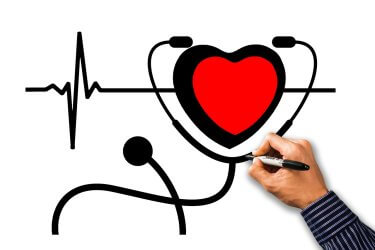
Health Sevices Course I
A semester course, Health Services I covers basic concepts in health occupations, beginning with medical terminology, to provide an understanding of the common language used in the field. Students then conduct extensive research on the five different pathways of health: a) diagnostic, b) therapeutic, c) health informatics, d) support and e) biotechnology research and development. Students spend time researching colleges and the different routes available to them. In addition, students will also study laws, ethics, safety, insurance, and facilities as they relate to health careers. Each student will finish the course by sharing a career presentation.
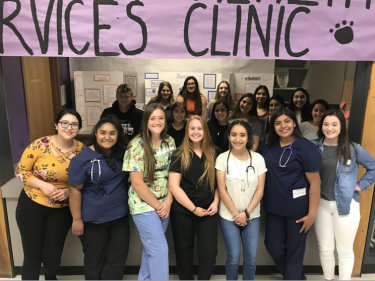
Health Sevices Course II.
After students complete Health Services I, they enroll in Health Services II. This second course focuses on learning and applying the skills needed to work in the medical/health field. The curriculum in Health Services II covers blood pressure, respiration, heart rate, taking a person’s height and weight, learning how to take different types of temperatures, and measuring a person’s flexion and extension with goniometers. To prepare the students to discuss risky behaviors and how to implement healthy behaviors, the Health Services II course begins with facts and statistics. For example, the United States spent about $3.5 billion in Healthcare in 2017 (Peter G Peterson Foundation, 2019) and those who are obese will on average pay $1,429 more than those of normal weight (CDC, 2019). Obesity, in turn, can cause heart disease, type 2 diabetes, high blood pressure, excess weight on joints, and reduced quality of life which can all lead to death. The students learn how obesity can be reduced by changing risky health behaviors, which include increasing physical activity, reducing the number of sugary drinks consumed, reducing screen time, avoiding tobacco and alcohol products, and being aware of health statuses.
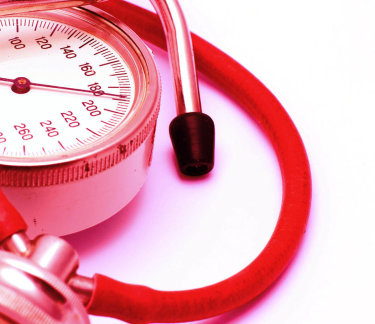
From Knowledge to Practice
During the second course, students participate in a simulation and learn how to communicate with adults, as all the patients are teachers and administrators in the building. During the simulation, students will take the vital signs or measurements of their patients (i.e. teachers and administrators), analyze the results and communicate to the patient the results using mindful behavior. During their interaction with the patients, students are required to provide them with modifications in behavior to promote healthy habits that they can implement in their own life.
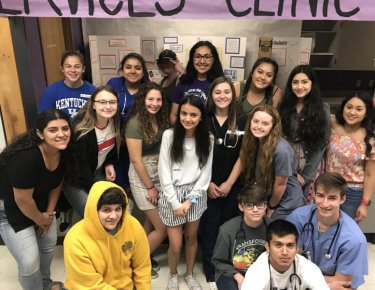 Thus, by having background knowledge, students are able to communicate a patient’s results with them. For example, if a patient came in with a Blood Pressure of 140/120, and a Body Mass Index (BMI) of over 30, the student should be able to tell the patient that they are hypertensive and are considered overweight to obese, which puts them at risk of type 2 diabetes and heart disease. They could also have a patient who comes in with a blood pressure of 110/70, a resting heart rate of 70, and a BMI of 27. This student would need to know that a BMI chart can at times be inaccurate for some populations. In other words, many times athletes are considered to be obese, however, they are actually healthy. This is because BMI looks at what the weight to height ratio should be. Athletes tend to have more muscle which weighs more than fat, therefore causing them to have a high BMI.
Thus, by having background knowledge, students are able to communicate a patient’s results with them. For example, if a patient came in with a Blood Pressure of 140/120, and a Body Mass Index (BMI) of over 30, the student should be able to tell the patient that they are hypertensive and are considered overweight to obese, which puts them at risk of type 2 diabetes and heart disease. They could also have a patient who comes in with a blood pressure of 110/70, a resting heart rate of 70, and a BMI of 27. This student would need to know that a BMI chart can at times be inaccurate for some populations. In other words, many times athletes are considered to be obese, however, they are actually healthy. This is because BMI looks at what the weight to height ratio should be. Athletes tend to have more muscle which weighs more than fat, therefore causing them to have a high BMI.
Students also learn how to ask their patients about the lifestyle choices that they make on a regular basis. The patients (i.e. teachers and administrators) have the option of selecting a specific healthy behavior (e.g. stress reduction). Thus, students are challenged to be prepared with educational information and facts on how patients could improve on that one specific habit (i.e. ways to reduce stress).
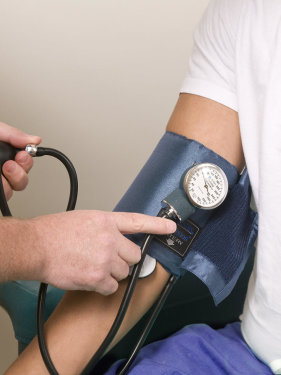
Student Reflections
Students commented at the end of the semester about how the simulation allowed them to prepare for a career in a health field.
“…the simulation helped me learn how to communicate the patients results, and the weighing portion was awkward; however, in an actual setting; I will need to be able to communicate that number and let them know what their health status is” (J. Balderas, Personal Interview, October 4, 2019).
“The simulation helped simulate an actual career in the medical field, it helped me learn how to be professional and communicate effectively” (J, Macias, Personal Interview October 5, 2019).
Overall, this simulation was able to help students communicate with patients of all ages, understand health results and learn some of the basic skills needed to be successful in a health career. Even if students were not interested in having a health career, they learned vital information that is important to maintaining a healthy lifestyle.
References
Bureau of Labor Statistics (2019, September 4). Occupational outlook handbook. Retrieved October 3, 2019, from https://www.bls.gov/ooh/healthcare/home.htm
Center for Disease Control and Prevention (2019). Overweight and obesity. Retrieved October 8, 2019, from https://www.cdc.gov/obesity/data/adult.html
J. Balderas, Personal Interview, October 4, 2019
J. Macias, Personal Interview, October 5, 2019
Peter G. Peterson Foundation (2019, March 15). Why are Americans paying more for healthcare? Retrieved October 8, 2019, from https://www.pgpf.org/blog/2019/03/why-are-americans-paying-more-for-healthcare
